Back in the States, identifying different species of gulls was a manageable task, and mediocre birdwatcher though I was, I had no difficulty distinguishing the 5 more common gull species in the Mid-Atlantic region. However, when I took up residence in the Eastern Mediterranean, I began having problems especially with the various types of white-headed gulls. Collectively, they’re referred to as the Herring Gull complex. [This wiki looks good too.]
Among these white-headed/dark-winged gulls formerly lumped into the genus Larus, there were 18+ recognized species the last time I checked, sharing similarities that make telling them apart for the amateur birdwatcher very difficult.
Accounting for this radiative speciation has been a challenge for the biologist. Some have proposed that the Larus gulls were an example of a ring species proposed by the late great Ernst Mayr, but that conclusion has been disputed (convincingly, I would say). Darren Naish of Tetrapod Zoology had a nice write-up of that a couple of years ago, No no no no NO: the Herring gull is NOT a ring species! [References in original]:
[T]he taxa regarded by Mayr as subspecies of these two are now regarded as distinct enough to be regarded as separate species. The Aralo-Caspian gull regarded by Mayr (1942) as the ancestral Herring gull population is the Caspian or Steppe gull L. cachinnans, and the Mediterranean and eastern Atlantic gull thought by Mayr (1942) to be a westward excursion of the Caspian gull is the Yellow-legged gull L. michahellis. Furthermore, if a recently proposed subdivision of Lesser black-backed gulls is accepted (Sangster et al. 1998), then the proper name for this species is L. graellsii, and two taxa previously ranked as subspecies – the Tundra gull L. heuglini and Baltic gull L. fuscus – should be separated as species. Of course you could bring in here the debate over the whole subspecies concept: there are over 20 of these in the Herring gull-Lesser black-backed gull complex, so.. gack.. how many species should we be recognizing? And once we do start to recognise at least some of these taxa as species, doesn’t this negate the whole raison d’être of Mayr’s proposed ring?
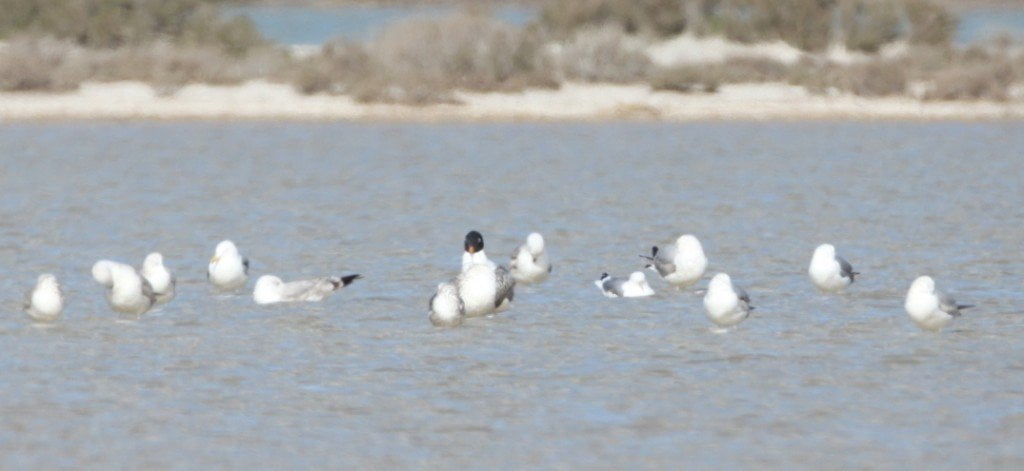
Gulls in Larnaca, taken 22/02/2010 by ©Stavros Christodoulides
Recognizing that gull identification is confusing doesn’t help your average birdwatcher however. We want to learn how to distinguish between these newly recognized species. For the Eastern Mediterranean, that means learning:
- Yellow-legged gull L. michahellis
- Caspian gull L. cachinnans
- Armenian gull L. armenicus
- Lesser black-backed gull L. fuscus
- Heuglin’s gull L. heuglini
So, here are some brief descriptions of each, describing the adult descriptions only in order to keep it simple for the inexperienced, starting with the archetypal Herring Gull L. argentatus as reference. Note however, that while previous field guides failed to adequately represent all of these now-recognized separate species, the 2nd edition of the Collins field guide treats this topic quite well.
The Herring hull is everybody’s idea of a seagull, being present throughout the year at coastal cliffs, beaches, harbors and towns. It is also familiar at inland sites in winter, especially reservoirs and refuse tips, and breeds in the relatively-Northerly regions of Europe, Asia, and North America. Its pale grey back separates it from the Black-backed gulls and its larger size, more menacing profile and red-spotted beak distinguish it from the Common gull.
These gulls breed around the Mediterranean and have yellow, rather than flesh-coloured legs. Apart from their yellow legs, they can also be told from British Herring gulls by their larger size, darker backs and different proportions including longer wings and longer legs. The adults always show more black and less white in the wing tips and this is especially obvious on the underwing which shows only a tiny amount of white. In winter they develop less streaking on the head and therefore the whiter heads of both adults and immatures make them stand out amongst a winter flock of Herring Gulls.
These gulls breed around the Black and Caspian Seas and have long, slender bills, accentuated by the sloping forehead. The legs, wings and neck are longer than those of the Herring gull and Yellow-legged gull. The eye is small and often dark, the legs vary from pale pink to a pale yellowish colour. The back and wings are a slightly darker shade of grey than the herring gull but slightly paler than the Yellow-legged gull. The outermost primary feather has a large white tip and a white tongue running up the inner web.
These gulls breed around the Caucuses and Middle East and while similar to Yellow-legged Gulls, are slightly smaller with a slightly darker grey back and dark eyes. The area of black on the wingtips is more extensive with smaller white spots. The bill is short with a distinctive black band just before the tip.
These gulls are similar in size to the Herring gull or just slightly smaller. The Lesser Black-backed gull has a dark grey to black back and wings. Black primaries show white tips and one or two white mirrors on outer primaries.
This gull is closely related to the Lesser Black-backed gull and breeding in Western Siberia, but slightly paler, rather larger and more robust, and more long-legged. The back is dark grey but not black, in contrast to the black on wings, Legs are usually yellow but can be pink. In winter the head is only lightly streaked with brown but there is heavier streaking on the hindneck.
Summary
I’m sure that that is not a great summary of their classification schemes. But it’s a start. Of course hybridizations have been reported, and there may or may not be apparent gradations of these descriptions, making identification even tougher in Cyprus where they can all be seen at various times of the year.
To recap however, grouping them by their slight variation in body size between 53 and 67cm in length (21 to 26in):
- The biggest two are Yellow-legged and Caspian gulls, distinguishable by the presence or absence of brightly-colored (yellow) legs.
- Intermediate in size, the Armenian gull has a short with a distinctive black band just before the tip of the bill.
- Slightly smaller are the Lesser Black-backed and Siberian gulls, which stand out from the others by their darker backs, distinguishable by their almost black or merely dark grey backs, respectively.
There are also juvenile birds to confuse a birdwatcher. And then there are a couple other slightly less-likely gull species outside of the gulls described above, such as:
- Audouin’s Gull L. audouinii (Length: 50cm/20in) — Dark red bill with blackish subterminal band and yellow tip. Dark olive-grey legs.
- Common Gull L. canus (L: 43cm/17in) — Greenish yellow bill without red spot. Yellow legs.
And finally, I’ll mention the less difficult black-headed gull species, such as:
- Mediterranean Gull L. melanocephalus (L: 40cm/16in) — In summer, more extensive black head than other black-headed gulls; in winter, dark streaked spot behind eye. Unmarked whitish primaries.
- Black-headed Gull L. ridibundus (L: 38cm/15in) — In summer, dark brown head; in winter, dark brown spot behind eye. Broad white leading edge of primaries, contrasting below with dark remaining primaries.





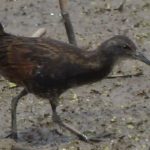

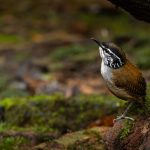


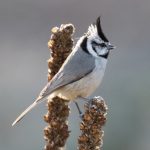
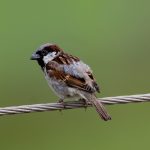
This is terrific, Dan, and terrifically daunting. Gulls make my head swim!
Thanks Mike!
I usually solve my gull identification problems by looking the other way and pretending I haven’t seen them.
I still have a hard enough time identifying North American gulls! I’m not ready to expand my gull horizons…
We only get Silver Gulls in Broome, so if it is not that then it is a rarity! There has been a Sabine’s Gull here in the past.
I am very proud to say that I studied biology with a focus on ornithology where Mayr did*, in Greifswald, and that I personally know Dorit Liebers and knew the late Andreas Helbig quite well who proved Mayr wrong (in an article Darren Naish’s excellent post was centered around). It was very touching to read a comment from Mayr to a more non-scientific article by Liebers & Helbig in a German birdwatching magazine about the Herring Gull not being a ring species, where Mayr applauded them and was happy not only over but beyond the moon about the research. This clearly showed Mayr’s grandeur: very shortly before he passed away at the age of 100, he saw one of his most important research hypotheses proven wrong. Most people would have stubbornly denied it, or refused to comment. Not Mayr. Throughout his (handwritten!) letter, it was apparent that the fire of scientific curiosity was still wildly alive inside him and he would have loved to join the team and expand on the new results.
His death, although he was blessed with a very long life, was a loss felt very bitterly in the German scientific community. And the sudden death of Andreas Helbig, a bit more than half a year later at the age of 48, was nothing short of a shock. Germany had lost one of its most promising ornithological researchers, and one of its most active birders.
SIGH
Well, I guess I should apologize for hijacking your post.
I thoroughly enjoyed it, it is excellent, but one thing: have you paid attention to the variation within Caspian Gulls? 🙂
* Mayr technically studied medical sciences, but he was a true and fanatic/fantastic birder and this was the reason for him choosing Greifswald over any other university – he wanted to go birding there. I studied biology but just like him was mostly busy being outside and looking at birds – which is what got me a job after all, so both Mayr and I were doin’ it right 🙂 Okay, this is where the analogy ends – Mayr was an absolute scientific GENIUS. I am clearly not.
And a caption below a picture showing the King of Gulls in breeding plumage simply stating: “Gulls in Larnaca, taken 22/02/2010 by ©Stavros Christodoulides” is a very effective understatement.
Yes, my heart skipped a beat or two there…
🙂
Thanks Jochen for contributing that information about Mayr!
And also, I was hoping someone would notice the Great Black-headed Gull. Incidentally though, I left out mentioning this remarkable gull in the caption as it wasn’t actually one of the birds I talked about in the post! It just was too good to pass up.
Everything connected to Great Black-headed Gulls is too good to pass up. Thanks for including this pic!
What an incredible species.